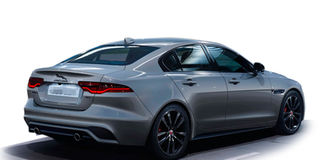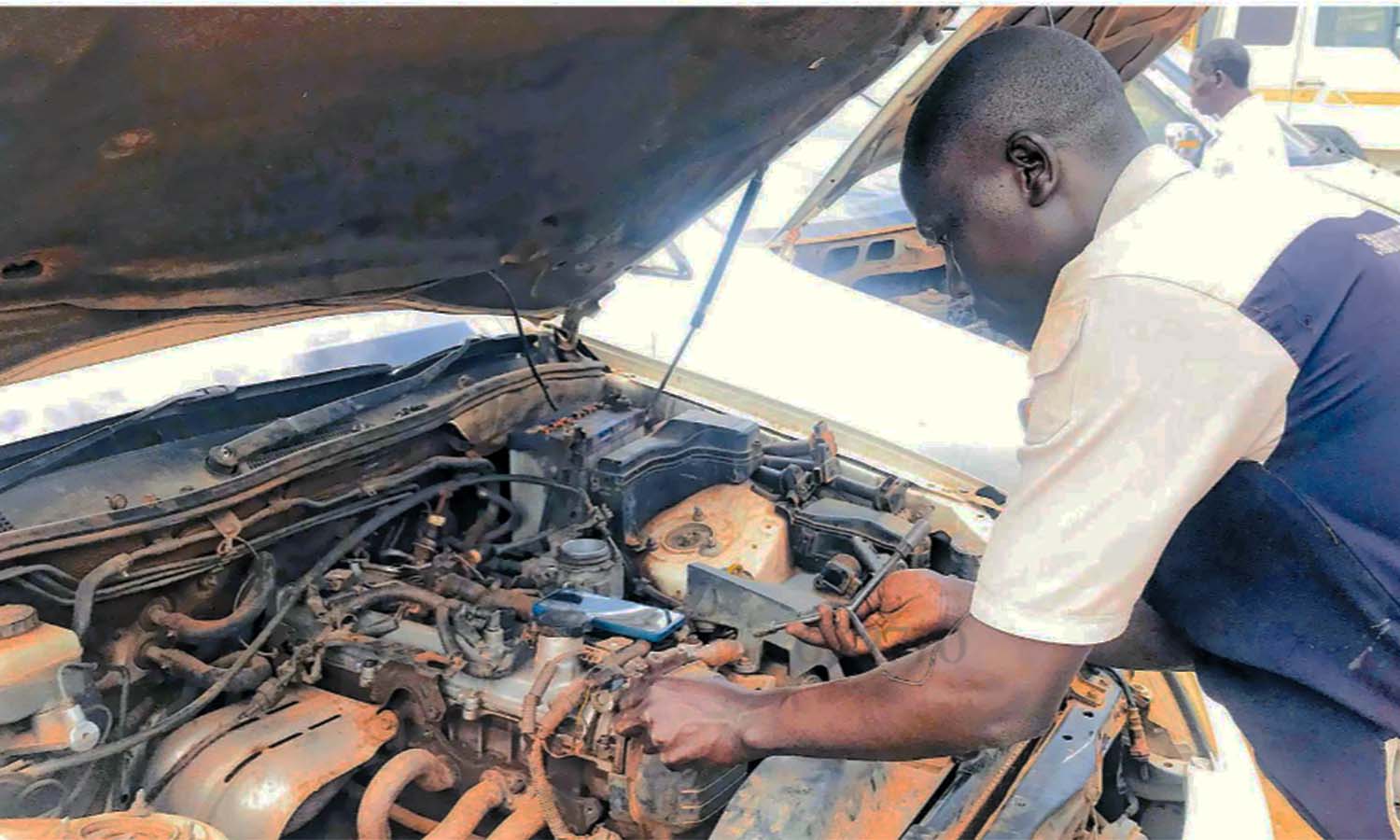Prime
The Jaguar XE clings to the road

The design features several safety features, including the advanced emergency braking system. Photo / netcarshow.com
What you need to know:
- The XE is the most advanced, efficient and refined sports sedan ever produced by Jaguar. With dynamic design and agile drive, the XE is a Jaguar to its core.
Clingy” is not a word that one would readily associate with any kind of car review; but “clingy” is the word that springs to mind as the Jaguar XE I sit in spears through tight turns in a picturesque mountain pass in Western Cape, South Africa. The clinginess comes from the 245-section wheels and their endless grip.
What is it?
This is Jaguar’s newest; though they do have an SUV that is more or less ready for the showrooms; but still, this is Jaguar’s newest. It is also Jaguar’s smallest, and cheapest. From a hoon’s perspective, it is Jaguar’s best as well.
It is not the replacement for the old, defunct X Type, which was a Ford Mondeo in a fancy frock. This is a whole other car. However, it occupies the slot previously darkened by the X Type. Motoring hacks have long memories and we remember the wrong-wheel-drive X Type that seemed such a sellout for a company such as Jaguar. The Jaguar XE is a four-door, five-seater saloon car with rear wheel drive, which makes it a real Jaguar through and through.
The interior
Unmistakable. Once you get inside, it is immediately obvious what car you are in. The design cues are heavy off the bigger and pricier XJ saloon and F Type thundercat, with the circular steering wheel boss, the thick-rimmed wheel, the rotary gear knob, the infotainment screen, the lovely detailing, the stitching on the leather.... wait a minute, what leather? Is that leather or is it not?
Turns out it is not. Strike one for the XE. Jaguar’s focus on “premium luxury” does not allow them to skimp out on the fancy stuff. What they use instead is something that almost looks and feels like leather but is not leather.
There is further evidence of cost control in the use of plastics around the dashboard. Some of it is scratchy. While the overall appearance is actually quite good; more so if you spec your car up with the dark interior; the cheapskate build materials are a bit of a disappointment, much as they are not immediately obvious.
You will have to be looking really hard before you spot them. Eschew the lightly hued interior too, which could easily show stains and also be a bit misleading.
Misleading? Yes, misleading, which is where the XE’s strike two comes about: the rear seat space. A brightly coloured interior may give an illusion of space where there isn’t any.
The car may be a five-seater, but it will not seat five, at least not without considerable discomfort. Four up is also a bit of a pinch: the rear armrest is intrusive into the elbow room (and rib cage areas) of the flanking seats, which makes it less than ideal for use.
To further exacerbate the absence of upper body wiggle room is the rear legroom, which is, for lack of a better word, terrible.
Even with the front seats shoved as far fore as they could possibly slide on their motorised rails, knees in the back seat will squash into the backs of the front seats.
This may force the rear seat occupants to sit a bit more upright than they would prefer to, but that too highlights yet another problem: there is no headroom.
There is an inexplicable dip in the rear roof lining that seriously robs the space in which to toss your heads during hard cornering manoeuvres.
The exterior
The face is as unmistakably Jaaaag as the dashboard design was. The bonnet has three strakes on it that resemble the claw marks of, well, a jaguar. This makes the car look aggressive from the front, but aggressive in an attractive way.
The side profile reveals the compact dimensions and high window line that solidly place this car right in the firing line of the Mercedes Benz C Class and BMW 3 Series. The boot is short and stubby. All this makes the XE, for all intents and purposes, a small car.
Active engines
First up is the 2.0 litre petrol-powered DOHC 4-cylinder boosted by a single mono-scroll turbo. This is the same engine we find in the Evoque, good for 240hp and 340Nm.
You do not need insane revs to reach these figures: peak power is available at “only” 5500rpm. It will propel the car to 100km/h from a dead stop in 6.8 seconds; and on to a top speed of 250km/h. Consumption figures are quoted as 7.5l/100km, which in Car Clinic-speak translates to 13.3km/l. Not bad at all, for a Jaguar.
The exciting unit is the 3.0 V6. Four valves per cylinder and DOHC work together with a twin vortex supercharger to yield 340hp and 450Nm, numbers that would cause a small tremble of excitement to shiver its way down a petrolhead’s spine, more so given that this urge is fed through a rear-drive platform.
The power is on a slightly higher shelf:
6500rpm, but is it ever lower whenever such numbers come up on a spec sheet? 100km/h comes up in a hair over five seconds and you will top out at 250km/h too, but this terminal velocity reeks of limitation to me.
One might be able to pay Jaguar to dismiss the electronic nanny, in which case I’d say 290km/h would not be impossible. There was no confirmation of this, though: it is just clever speculation.
The economy may be comparatively worse at 12.3km/l (8.1l/100km in real world terms) but I seriously doubt if many will get these figures.
Both of these cars come with eight-speed ZF automatic transmissions that allow for pootling around at only 1500rpm (which then makes the consumption figures both possible and plausible). Both also have manual overrides via paddle-shifts mounted on the steering wheel. The suspension is multilink.
Sweetening the deal
Hands up if you think running a Jaguar will introduce economic strife to your otherwise carefully planned fiscal behaviour. Put those hands down and listen here very carefully, because this to you might seem as hard to believe as it was for me.
Buying a brand new Jag earns you a five-year/150,000km warranty. Yes, you read that right: for half a decade or the equivalent of three and a half trips around the Earth, your new baby will be under the protection of Jaguar Land Rover, well covered by a comprehensive warranty.
Speaking of service intervals: these come up at 32,000km, or three-quarter way around the Earth (nothing puts distances into perspective as much as referencing the Earth’s 40,000km circumference). That means some of the hand-me-down Toyotas people relentlessly pursue will have been serviced six times before the Jag goes in once.
Cost
The pricing is unclear, and Jaguar will not commit to any numbers at this moment, but in the next few days they should have answers. This is because the company wants to consolidate the pricing in various markets to make it similar across the board irrespective of the prevailing tax regimes in a given country; and this is not a simple task. While all countries levy taxes, some levy more taxes than others.
Tentative figures are about Shs172m for the cheaper 2.0 litre vehicle and about Sh220m for the pricier 3.0 litre alternative.





